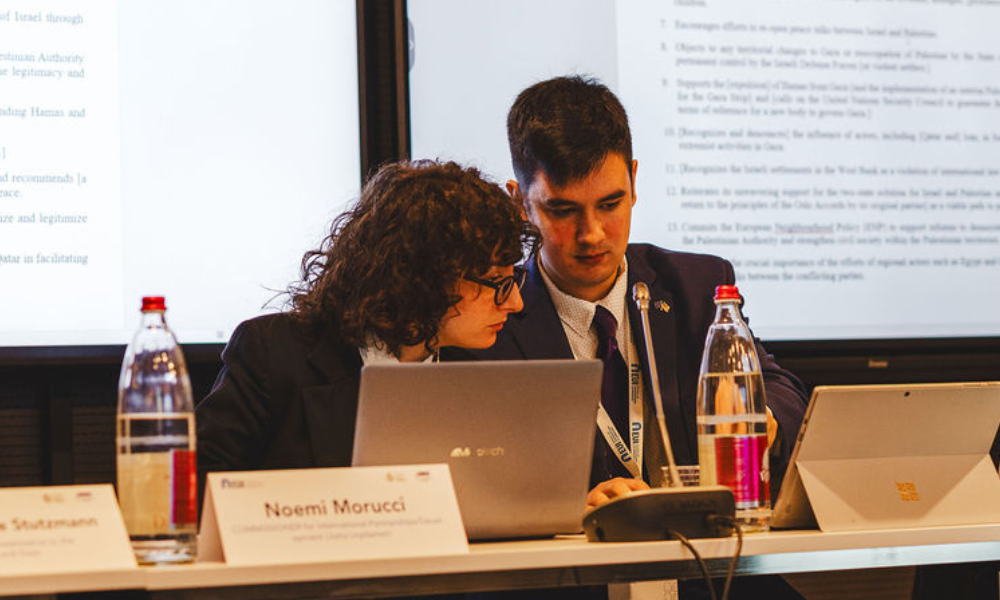Modeling the Way with Model EU
A Reflection on Cultural Exchange and International Networking
M.A. in Political Science, European Union Policy Studies
During the December 2023 Model European Union exercise with the European University Institute and the University of Florence, I was part of a four-person team. I served as the High Representative and was joined by three ministers, each hailing from one of the participating universities. The cultural gaps between us, as Americans, and our European counterparts became evident from the beginning of our introductory meetings. Even minor social differences became a noticeable contrast, such as the volume students use when answering a professor’s question. According to one of our European colleagues, the initial distinctions were intimidating. Luckily, that intimidation faded as time passed, and we started noticing more similarities than differences.
After various meetings in preparation for the culminating simulation, our diverse group often exchanged anecdotes between assignments to help pass the time. We found ourselves describing our favorite parts of our hometowns to each other, comparing our native weather forecasts to Florence, and joking about the levels of stress we were under because of various upcoming assignments at our different schools. By the day of the simulation, these strangers had faded away to reveal good friends. We were even disappointed when we parted ways for winter break, as our new international friendship had just solidified.
I still find it funny, and a bit ironic, that I—as an American—was chosen to represent one of the most high-ranking officials in the European Union. However, acting as the High Representative gave me a much deeper insight into the intricacies of European and foreign policy. Chairing the meeting, along with my fellow commissioners, was a herculean task that illustrated the inherent difficulties of wrangling together 27 different sovereign opinions in pursuit of a unanimous decision. The simulation truly underscored the amount of effort that goes into the operation of the EU institutions while maintaining independence for its member states.
Despite its challenges, the Model EU simulation was a genuinely fun and meaningful experience. My colleagues and I studied and tackled complex topics through the simulation. You could sense that everyone in the room was invested in the exercise and using the skills they had learned in a practical way. Overall, the simulation gave me specific tools that improved my ability to be both a successful student and a professional. While the practical nature of the simulation allowed me to use classroom knowledge and individual research to achieve compromise among the group, it also revealed a more important lesson. The Model EU simulation provided an opportunity for cross-cultural exchange and networking, and those are skills that I am confident I will continue to use in my professional career. I learned that despite differences, a group can always find things in common, and those commonalities often become more essential in teamwork than technical knowledge.
Noah Buracker (‘24), a current European Union Policy Studies student, hails from Harrisonburg, Virginia, with a keen interest in government relations and political science. Graduating cum laude from James Madison University in May 2023 with a bachelor's degree in History and Political Science, Noah is dedicated to exploring the intricacies of European politics and governance through his academic pursuits in Florence, Italy.
